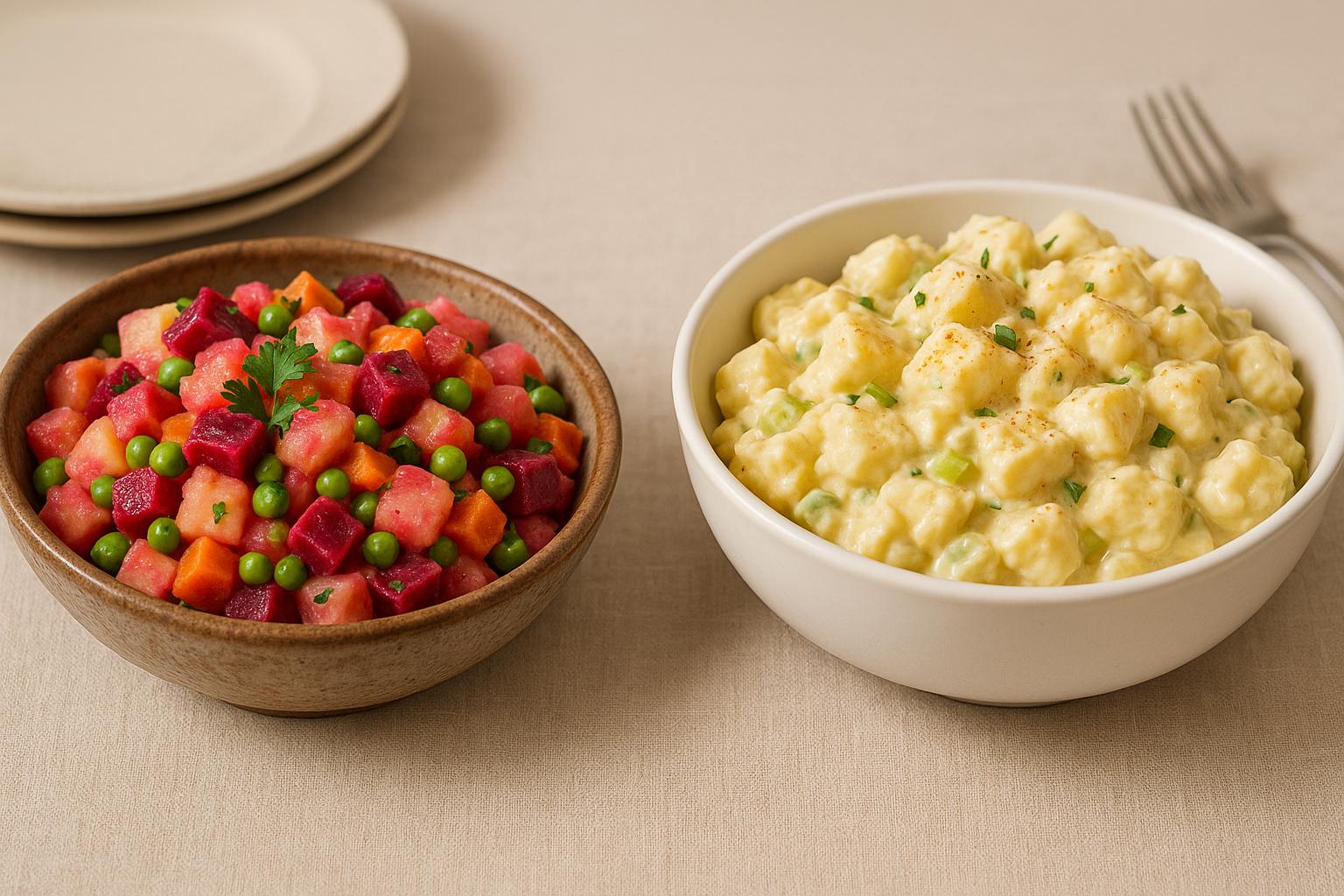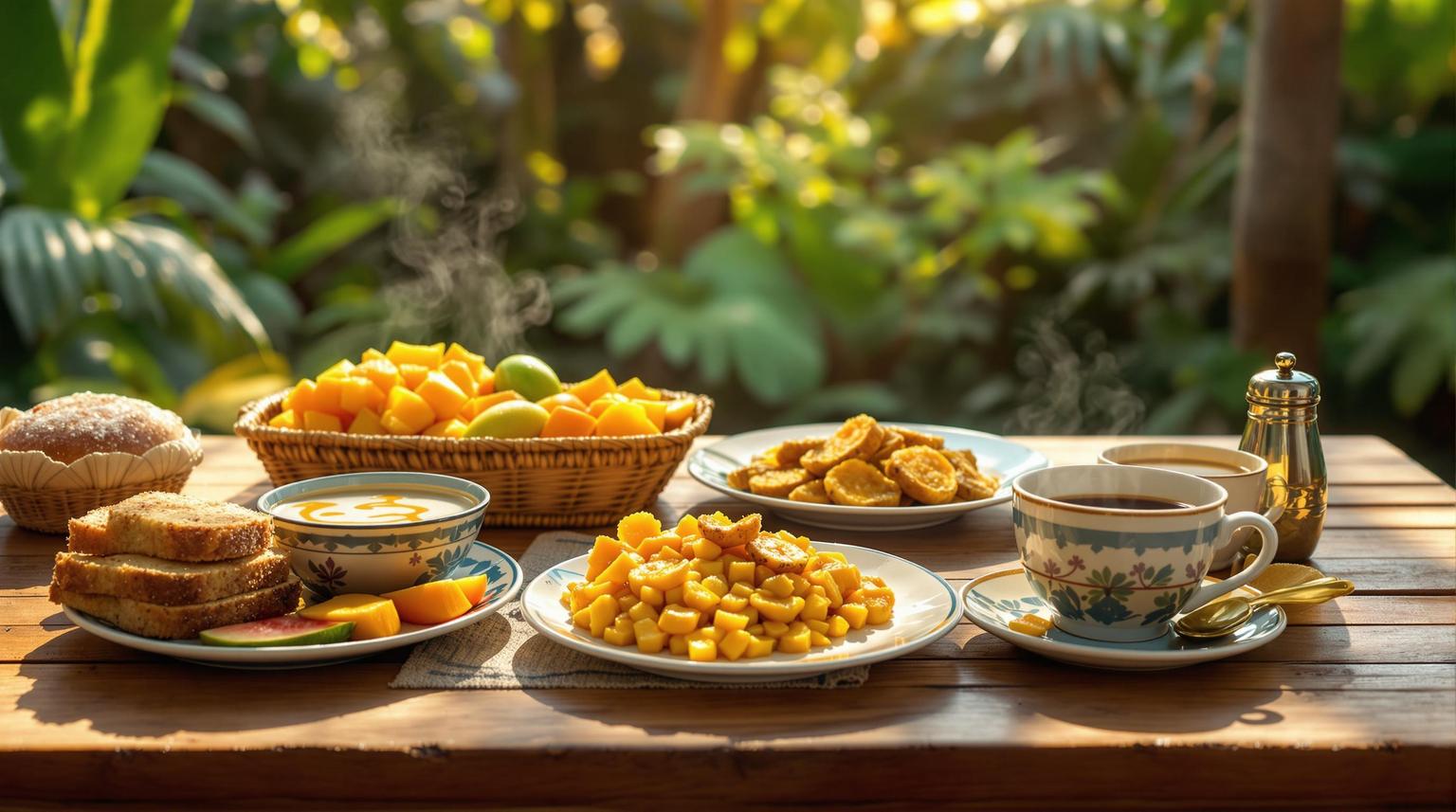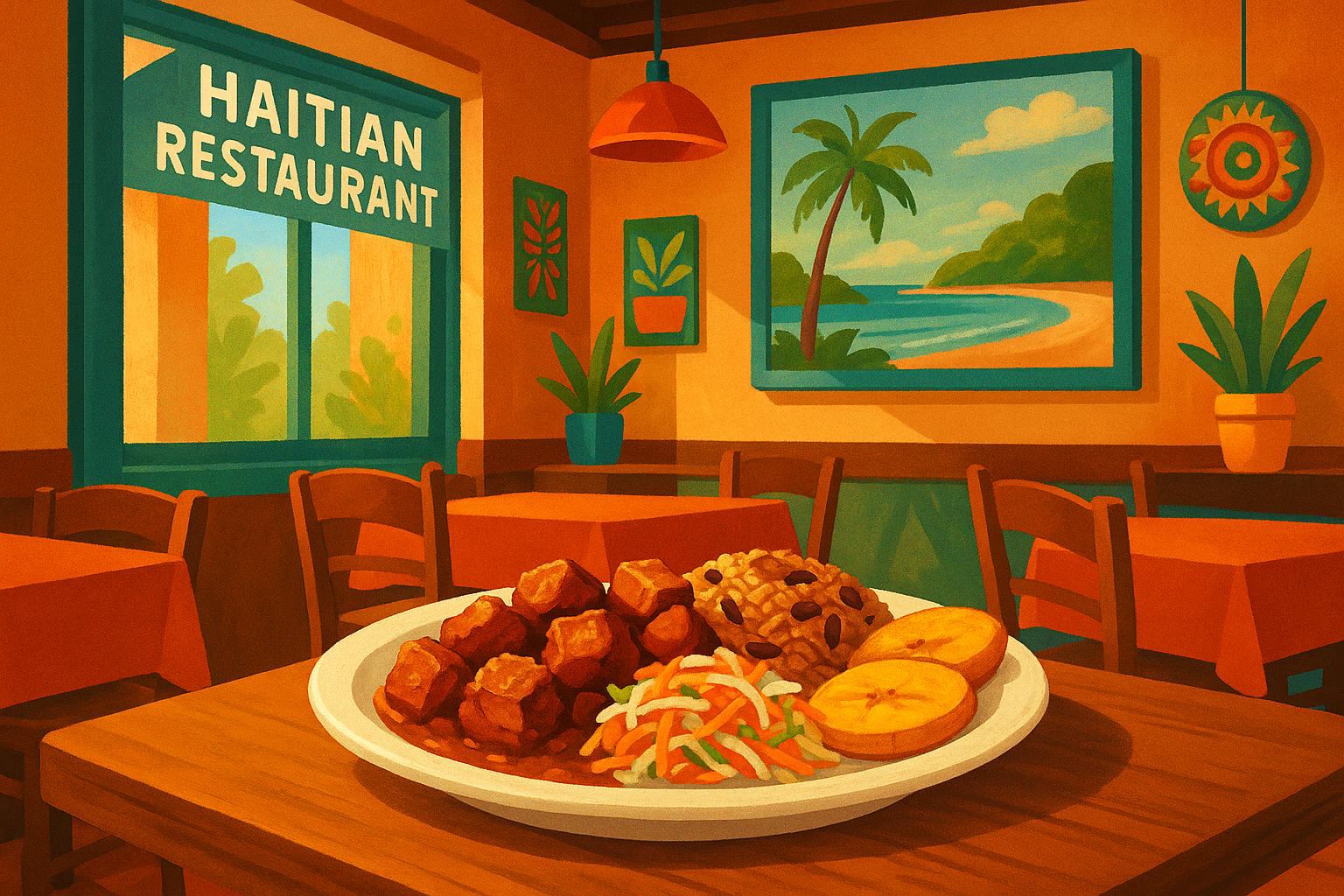The Taíno people, the Caribbean's first inhabitants, introduced a smoking method called "barbacoa" to preserve and flavor food. This technique involved slow-cooking meat and fish on a wooden rack over low heat, making it practical in the humid climate. Over time, Haitians evolved these methods, incorporating marination and drying to create dishes like tasso. While both approaches focus on preservation, Haitian techniques emphasize deeper flavor development through spice blends and additional preparation steps. These practices connect modern Haitian cooking to its Taíno roots, showcasing the evolution of food preservation methods over centuries.
1. Taino Smoking Methods
Methods and Tools
The Taíno people employed a smoking technique called "barbacoa", which involved slow-cooking meat and fish on a wooden rack over low heat. This method not only gave the food a rich, smoky flavor but also acted as a natural way to preserve it. The setup was simple yet effective, relying on the steady heat and smoke to prepare the food.
Purpose and Function
The barbacoa technique was more than just a cooking method - it was a practical solution for preserving food in the humid Caribbean climate. By smoking the meat and fish, the Taíno extended their shelf life while enhancing their taste. As noted:
This technique also served as a preservation method for meat and fish. (Source: BushTribe Eco Adventures, September 2024)[2]
2. Haitian Smoking Methods
Methods and Tools
Haitian smoking techniques trace their roots back to the Taíno barbacoa method, but over time, they’ve been adapted to suit specific culinary needs. A standout example of this evolution is tasso, a dish that highlights the fusion of smoking and drying methods in Haitian cooking.
To make tasso, cooks start by marinating beef or goat meat in a mixture of citrus juice and epis (a blend of herbs and spices). After marination, the meat is air-dried and then fried until it turns crisp. This process combines marination, drying, and careful cooking to not only extend the meat’s shelf life but also enhance its flavor.
Unlike the original Taíno technique, which relied on a simple wooden rack over an open fire, Haitian methods integrate several preservation steps. This shift from a single smoking process to a multi-step approach reflects a significant advancement in both technique and taste.
Purpose and Function
Tasso emerged in an era before refrigeration, serving as a practical way to preserve meat while also deepening its flavor. While both the Taíno and Haitian methods aimed to preserve food without modern technology, Haitian techniques go a step further by emphasizing flavor and versatility, making the preserved meat a key ingredient in a variety of dishes[3].
This progression - from the straightforward Taíno open-fire method to the more intricate Haitian preservation techniques - illustrates how traditional practices have shaped and enriched modern Haitian cuisine[3].
Social Context
Haitian smoking methods are more than just a means of preservation; they’re a cornerstone of cultural identity, connecting the present to Taíno heritage. These practices have been passed down through generations via storytelling and hands-on cooking.
In many Haitian households, preparing tasso or similar smoked dishes is a communal activity. Families come together not just to cook, but to share knowledge and preserve traditions. The detailed process of marinating, drying, and smoking becomes a way to bond and maintain cultural continuity.
These techniques have also historically played a vital role in food security. Communities that mastered preservation methods like tasso were better equipped to endure periods of scarcity, highlighting the enduring importance of these culinary traditions in Haitian life.
Strengths and Weaknesses
The smoking techniques of the Taíno and Haitian traditions each bring their own set of strengths and challenges. Comparing these methods sheds light on how traditional practices were adapted over time to address evolving culinary and practical demands.
| Aspect | Taíno Methods (Barbacoa) | Haitian Methods (Boukannen - traditional Haitian smoking) |
|---|---|---|
| Flavor Development | Produces a rich, charred flavor with sweet undertones, enhanced by allspice and pimento wood; salt-curing intensifies taste | Bold, layered flavors from epis marinade and the gradual heat of scotch bonnet peppers |
| Efficiency | Straightforward but labor-intensive; heavily reliant on weather conditions | Involves multiple steps, including marination, drying, and smoking; more time-intensive but flexible |
| Food Safety | Higher risk of harmful compounds like PAHs and PCBs from direct flame exposure; uneven heating adds safety concerns | Safer through controlled, multi-step processes, though open-fire methods still pose risks |
| Equipment Requirements | Minimal setup - just a wooden framework and fire; materials are easy to source | Requires more tools, including marination containers, drying spaces, and cooking equipment |
| Preservation Effectiveness | Meets basic preservation needs of indigenous communities | Combines techniques for better preservation, flavor retention, and shelf life |
| Cultural Adaptability | Rooted in indigenous traditions and local ingredients | Blends African, French, and Spanish influences for a more adaptable approach |
The table highlights the unique characteristics of each method, but looking deeper reveals even more layers. The Taíno barbacoa technique stands out for its simplicity and accessibility. Journalist and chef Ramin Ganeshram, author of Sweet Hands: Island Cooking from Trinidad & Tobago, captures the cultural significance of these methods:
"In the Caribbean, our food tells the story of the Atlantic slave trade; it tells of how people were stolen from one side of the world and forcibly brought to the other side of the world. What traveled with people were herbs and spices, cooking methodologies, and the ability to forcibly adapt with the native people who were there and create something new" [1].
Despite its historical importance, Taíno methods face modern challenges, particularly in terms of safety. Research by Heaney, Padilla-Zakour, and Chen highlights the risks:
"Smoking could generate carcinogenic polycyclic aromatic hydrocarbons (PAHs) and dioxin-like polychlorinated biphenyls (PCBs) in foods" [4].
"Besides the safety risks of PAHs and PCBs formation, the non-uniform heating during open fire or direct flame smoking may result in hot and cold spots in the foods, which may lead to burning, acrylamide formation, and inadequate pasteurization" [4].
Haitian smoking techniques, on the other hand, have evolved to create deeper, more intricate flavors. Haitian chef Dayana Joseph explains the deliberate use of scotch bonnet peppers:
"In Haiti, we love to build bites. We do it in a way that slowly builds as you eat, and using Scotch bonnet chiles is the best way to do that" [1].
This method results in "bold heat and a signature fruity complexity" that sets Haitian cuisine apart from its Taíno roots [1].
However, Haitian techniques are not without their drawbacks. Their complexity and time demands can be challenging, and both methods rely on traditional practices that researchers describe as "labor-intensive methods that lack standardized safety guidelines" [4].
Ultimately, Haitian smoking techniques showcase an evolution that balances tradition with innovation. They bring together diverse influences to create more nuanced flavors while preserving the essence of Caribbean smoking traditions. These practices not only honor their origins but also push the boundaries of what traditional smoking methods can achieve.
sbb-itb-80c33ff
Conclusion
The Taíno barbacoa method has shaped modern Haitian smoking techniques, reflecting a rich history of culinary evolution and adaptation. Originating from the Taíno people, this method involved a basic wooden framework used to slow-cook meat and fish over an open fire - a practice that laid the groundwork for traditional Caribbean food preservation methods [2].
Over time, Haitian cuisine adapted and expanded on this technique, blending it with local ingredients and flavors to create something distinctly its own. These smoking methods not only preserve food but also safeguard a piece of cultural heritage, playing a key role in defining Haitian culinary traditions. To explore more about these traditional methods and their history, visit HaitianFoods.org.
FAQs
How have traditional Taíno methods influenced modern Haitian smoking techniques?
The smoking techniques central to Haitian cuisine today have deep historical roots, originating with the Taíno people. For the Taíno, fire and smoke served dual purposes: they were integral to ceremonial rituals and practical for preserving food. Over generations, these methods were influenced by African and French culinary traditions, shaping the distinctive smoking and barbecuing styles now synonymous with Haitian cooking.
Though modern approaches have introduced new tools and methods, the essence of using smoke to preserve and enhance flavor remains firmly tied to Taíno practices. This fusion of indigenous, African, and European elements creates a culinary tapestry that reflects Haiti's rich and layered cultural heritage in every bite.
How do Haitian smoking techniques reflect cultural heritage and strengthen community bonds?
Haitian smoking techniques carry a rich history, deeply connected to the nation's heritage. They act as a thread linking generations, keeping traditional practices alive while fostering a sense of belonging. Drawing inspiration from Taino cooking methods, these techniques hold a special place in Haitian culture, often intertwined with rituals and social events that bring communities together.
Smoking isn’t just about preserving food; it plays a larger role in communal life. For example, in Vodou ceremonies, smoking takes on a spiritual significance, symbolizing unity and shared purpose. These traditions not only reinforce community ties but also help ensure that Haitian customs endure, both within the country and among those living abroad.
What safety precautions should be taken when using traditional Taíno and Haitian smoking techniques?
Traditional Taíno and Haitian Smoking Techniques: Health Considerations
Traditional Taíno and Haitian smoking practices hold cultural significance, but they come with health risks that are important to understand. Directly inhaling smoke can expose the body to harmful substances like carcinogens, potentially leading to respiratory problems or other long-term health issues. A safer approach is to draw the smoke into the mouth and exhale it without inhaling deeply. This method helps limit exposure to these harmful elements.
It's also worth noting that tools like hookahs or similar devices can heighten the risk of toxin exposure. To reduce potential harm, it's crucial to approach these traditions with care and consider alternative methods that limit direct smoke contact. Balancing respect for cultural practices with a focus on health is essential for maintaining well-being.


